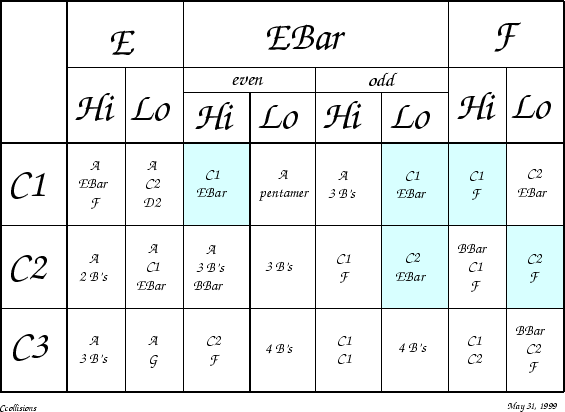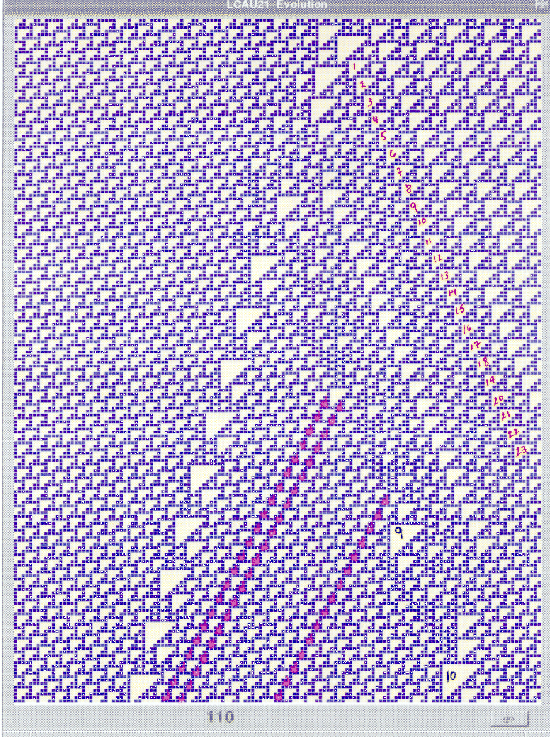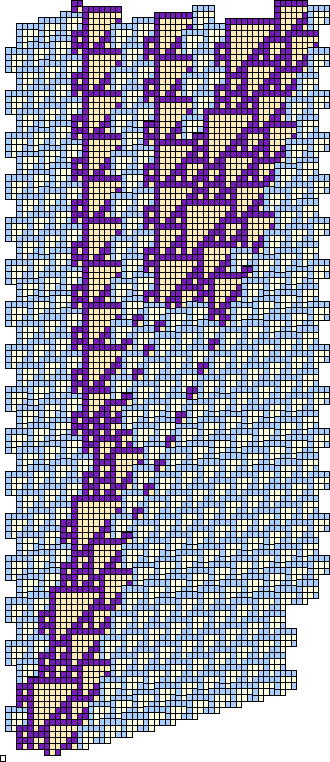



Next: C - EBar collisions
Up: Collisions with C gliders
Previous: C - D collisions
Contents
Any description of collisions with E gliders can become quite complicated simply because of the large variety of E gliders once their extensibility has been reckoned with. From a much larger perspective, there is far less variation because large E gliders are really margins of the alpha lattice, whose interface with other lattices is periodic on a sufficiently large scale.
Figure 3.29:
Some selected collisions amongst C, E, EBar, and F gliders exhibit the properties of solitons.
 |
Figure 3.30:
A pair of C's standing to the left can act as an En decrementer similar to an A coming in from the left. Still others simply get eaten away as the En dissolves into a burst of B gliders which the next C in line refurbishes into another En.
 |
Figure 3.31:
Many collisions with E complexes simply unravel the margin of an  domain, which means that they will always follow a predictable pattern.
domain, which means that they will always follow a predictable pattern.
 |
Figure 3.32:
C2 collides with E, producing a shower of B's. These can collide with a waiting C2 to restore the E, but with decremented index.
 |
Figure 3.33:
En eats up C3's, fattening itself in the process.
 |




Next: C - EBar collisions
Up: Collisions with C gliders
Previous: C - D collisions
Contents
Jose Manuel Gomez Soto
2002-01-31




